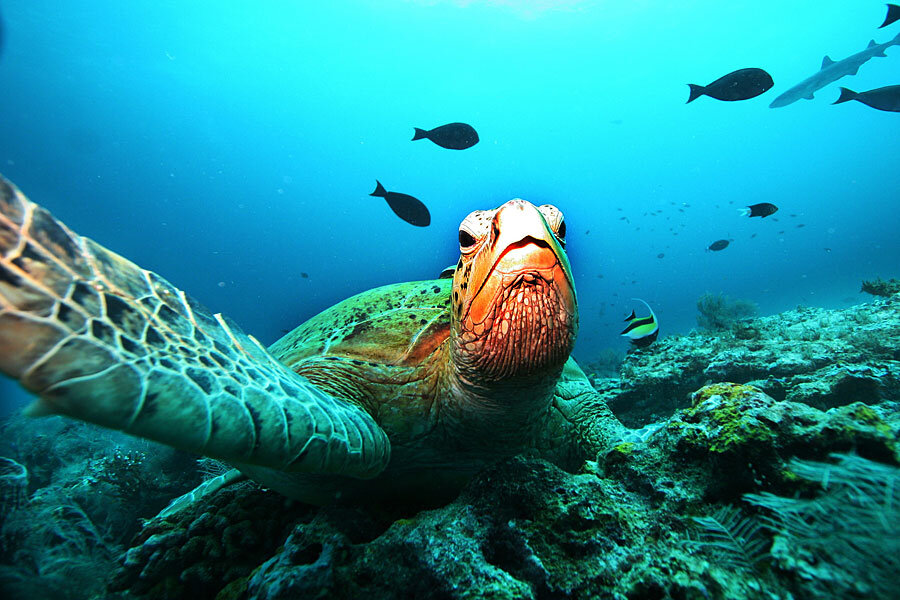Green sea turtles in Florida and Mexico: No longer 'endangered'
Officials are reporting good news for green sea turtles that live along the coast of Florida and Pacific coast of Mexico: they are being reclassified from endangered to threatened.
The green sea turtle (Chelonia mydas) was first listed on the Endangered Species Act in 1978.
At that time, the National Marine Fisheries Service (NMFS) and the US Fish and Wildlife Service agreed to classify the turtle as threatened worldwide. Along the coast of Florida, where there were just 100 breeding females in 1978, the sea turtles were listed as endangered.
Now the situation has reversed. Green sea turtles are now listed as endangered worldwide, and threatened along the coast of Florida and the Pacific Coast of Mexico.
Under the Endangered Species Act, "endangered" species are those with a high risk of extinction in the wild. The turtles’ new “threatened” classification indicates that while populations are rebounding, they aren’t out of the woods just yet, and could become endangered again in the near future.
Officials attribute the resurgence of green sea turtle populations in these areas to protections that came into place with the turtle’s classification as endangered.
After the species was listed as endangered, protections arose that significantly reduced some of the major threats to sea turtle populations, says NOAA biologist Jennifer Schultz in a phone interview with The Christian Science Monitor.
“It resulted in the prohibition of hunting the sea turtles for meat,” Dr. Schultz said. Protections also reduced the amount of turtles accidentally trapped in commercial fishing nets.
The turtles’ endangered classification also spurred efforts to protect nesting beaches and manage light pollution that confuses nesting sea turtles, says Sea Turtle Conservancy Executive Director David Godfrey.
“While threats remain for green sea turtles globally,” said Dan Ashe, Fish and Wildlife Services Director, in a NOAA press release, “the reclassification of green sea turtles in Florida and Mexico shows how Endangered Species Act-inspired partnerships between the federal agencies, states, NGOs and even countries is making a real difference for some of our planet’s most imperiled species.”
Mr. Godfrey says by phone that the change in the turtles’ status should not diminish efforts to protect the turtles.
“We don’t take lightly the idea of changing the classification of the green sea turtles,” Godfrey says. “They are still listed as threatened, and there has been no weakening in the regulations to protect them. All of the protections are still in place.”
NOAA spokeswoman Katie Brogan agrees, saying, “We are going to continue to protect green sea turtles.”
Beyond human threats such as fishing nets, green sea turtles must battle climate change, habitat loss, disease, and marine debris.
The new ruling not only reclassified the status of some turtle populations, but it divided the worldwide green sea turtle population into 11 distinct sub-populations, to allow conservationists to better target populations that need help.
Schultz says that since the reclassification process pointed out populations that were more and less thriving, “One really good thing is that it allows us to tailor our conservation approaches.”









